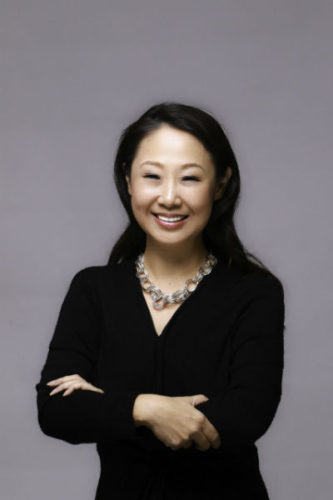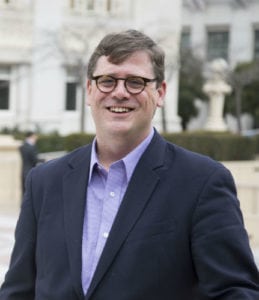Taking steps to change for the better
I had to change. My first behavioral act of shedding my old self was to cut off 14 inches of my long, blond hair with a snip of scissors. I also stopped wearing makeup and vowed to live one year in which I had no external definition of myself from my prior life. No hair, no makeup, no job, no title, no salary. Ancient Chinese philosopher Lao Tzu said, “A journey of a thousand miles begins with a single step.” I had just taken my first step.
I decided my second step would be to take a walkabout, a pilgrimage away from the world as I knew it to discover something greater about myself and the world I live in. I was drawn to go somewhere that held a spiritual calling for me, somewhere I would walk the land, be in nature, and live among people of a different culture. No hotels or spas.
I wanted to get back to the basics of life and strip away everything from the world I had created. In February 2014, I chose Nepal and Bhutan in which to spend six weeks trekking, camping, and immersing myself in Mother Nature. Little did I know at this time that this single act was not just six weeks but was the beginning of a four-year journey to the edges of the world outside of me and to the depths of the abyss within me.
From Nepal to Bhutan: The lessons I learned from my kids
In Nepal, from the first moment I began walking, I knew this is where I needed to be. My soul sang, and my eyes couldn’t take in enough of the beauty. If past lives do exist, surely this is where I come from. Arriving in Gorkha for our first night, we pitched our tents just over the hillside from Gorkha and made dinner. What I noticed right away were the village kids all running around playing with whatever ball or dirt piles they could find―and they were having a blast. They had no electricity, no indoor plumbing, no iPad, Xbox, or TV. They didn’t even go inside their small huts until they had to when darkness enveloped the sky. Yet they were having tons of fun and running around, getting dirty, and living life.
I struggled at the simplicity of their existence and the joy in their eyes. This was all I had ever wanted in my life. If it was so simple to achieve, why did I work so hard for so many years? I began to see the pain my children must have in their souls, being locked inside of our house, addicted to video games or texting with friends, unable or unknowing how to spend time outside and be happy despite our privilege. How can we all collectively keep denying our interconnectedness and the beauty of our world that we are simultaneously destroying in our pursuit of more?
Learning how to “live” before I die
By design, life is an ongoing identity crisis of the self to define and redefine who we are as we go through many of the major transitions and upheavals experienced over the course of being alive: adolescence, adulthood, parenting, divorce, middle age, retirement, loss of job, death of loved ones, and more.
In psychologist Daniel Levinson’s The Seasons of a Man’s Life, he discussed how each period is marked as being a stable period―until it is not and becomes a transitional period. A transition in life is a tremendous opportunity, when acknowledged, for self-redefinition and inner reorientation of who you are from who you once were. Throughout our lives there are equally important transitions, as well as life events, that are also worthy of recognition and require our attention. The stable period is the time when a person makes crucial choices in life, builds a life structure around these choices, and seeks goals within the structure. The transitional period is the end of one stage and the beginning of a new one.
I quickly learned on my journey that my worst fear is not death but discovering I haven’t really “lived” before I die. For me to continue searching externally for what is already within me, within all of us, only serves to continue my suffering and attachment to my ego mind. Awakening isn’t some enlightenment I am going to find “out there,” which will enable me to lead a blissful life forever after. Awakening is my journey toward interconnectedness. It is my awareness of being one and yet nothing altogether. My deepest awakening will come not from grasping or searching for something out there, pilgrimaging if you will, but merely from just letting go of what I hold onto most inside myself.
About the author: Carol A. Grojean, Ph.D., specializes in the areas of organizational effectiveness, project management and transformational change. She is also a Saybrook graduate with an M.A. in Applied Behavioral Science in Leadership and Organizational Development and a Ph.D. in Existential Leadership Transformation.
Are you a Saybrook University alumna or faculty member who is interested in submitting a blog post for potential publication on Unbound? You may do so by submitting your finished piece or pitch on the right-hand side panel of Unbound pages.
Would you like to learn more about Dr. Grojean?
Meet her in person at Saybrook University’s Residential Conference:
Time: 3:30 p.m. to 4:30 p.m. CST/1:30 p.m. to 2:30 p.m. PST
Date: Saturday, Sept. 1, 2018
Place: Hyatt Regency in Monterey, California
Or, talk to her virtually during her upcoming webinar:
Join the upcoming “GLOBE Talks: Dr. Carol Grojean, Saybrook Alumna of Change”
Time: 3:30-4:30 p.m. CST/1:30-2:30 p.m. PST
Date: Saturday, Sept. 1, 2018
Online: GoToMeeting (Click here) to join from your computer, tablet, or smartphone.
Or, call: United States (Toll Free): 866-899-4679
United States: 646-749-3117
Access Code: 184-872-589
Joining from a video-conferencing room or system?
Dial: 67.217.95.2##184872589
Cisco devices: [email protected]
First GoToMeeting? Complete a quick system check here.












































